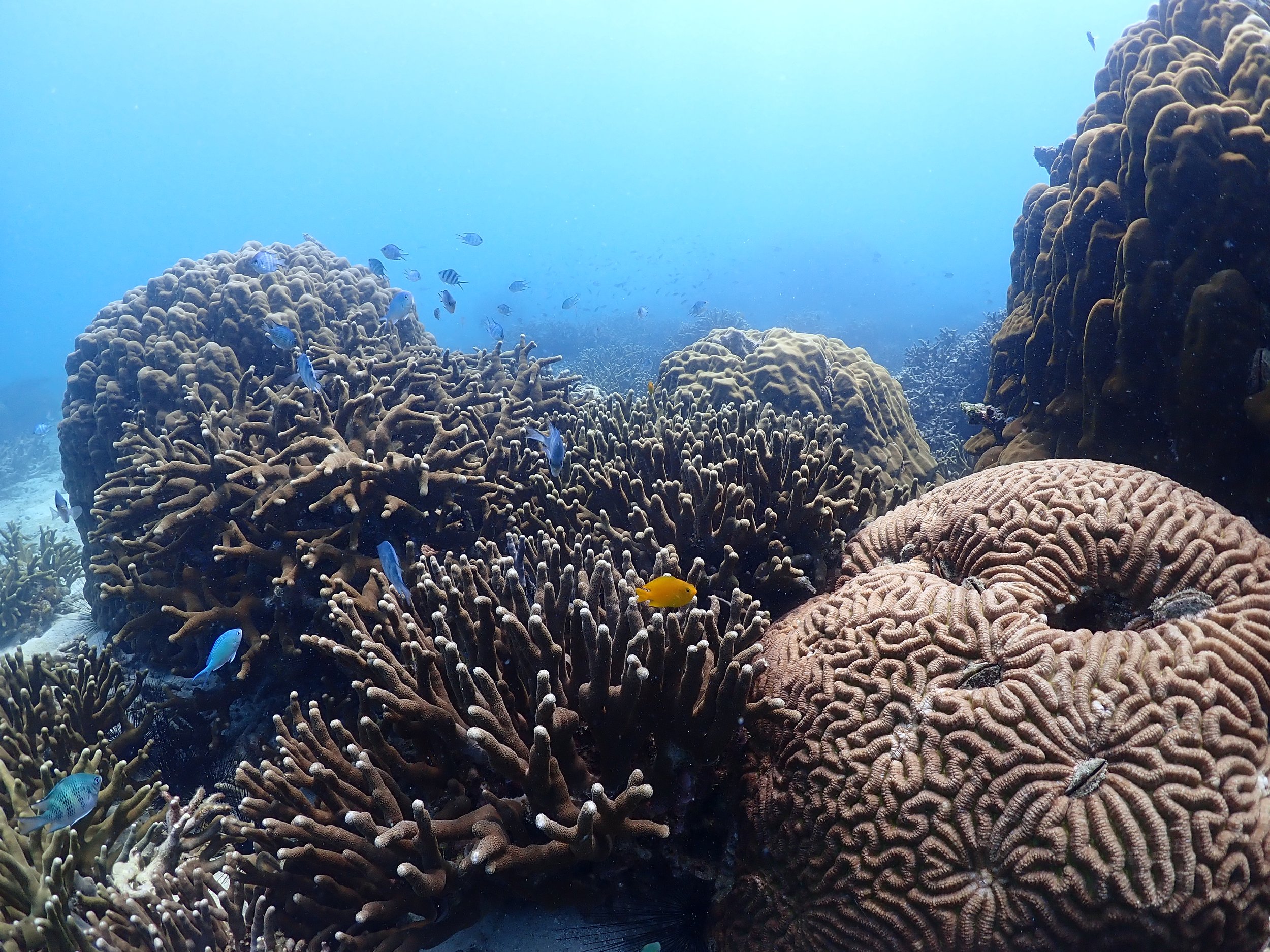The Growth of Reef Check Malaysia
One of the most fascinating things to me about my work at RCM has been the way that the organisation has evolved over the years – both in size and in the work that it does.
A young me, with a mission and vision to save Malaysia’s coral reefs. Photo credit: Going Places
In the beginning…
Conceived as a “citizen science” approach to coral reef monitoring, Reef Check started life in 1996 as a means to involve interested divers in reef monitoring.
Reef Check Foundation was established in 1997, and a coordinator was appointed in Malaysia in 2001. Reef Check Malaysia was registered as a “Company Limited by Guarantee” in 2007, and thus it all began.
At first, RCM was all about coral reef surveys.
The first surveys organised by RCM were conducted in 2007 – just 16 surveys at sites around the islands off the East coast (Tioman, Redang and Perhentian). That has now grown to a national survey covering some 300 sites around the country.
We now have an unparalleled data set stretching back 17 years, and we have a very good understanding of how the health of coral reefs around Malaysia is changing.
First growth
It didn’t last long.
In 2008, we were asked by the (then) Department of Marine Parks Malaysia, a Department in the Ministry of Environment, to conduct some education programmes for communities on the main islands off the East coast. This grew into a programme that now covers coral reef areas around Malaysia.
A few years later, we started to realise that a wider education and awareness effort was necessary, and our advocacy activities started in earnest. Initially focusing on preparing “advocacy reports” on topics as diverse as sewage pollution, diver impacts and tourism sustainability, we now have a wide array of channels we use to get across our message that coral reefs are important ecosystems that we need to look after better.
RCM in marine Management
Somehow, in around 2015, we began to understand that if we were to have real impact, we needed to find a role to play in management.
This was difficult to conceptualise because the management of the Marine Protected Areas in Malaysia is the sole province of government agencies, with limited scope for NGOs like ourselves to play a meaningful role.
But slowly, our thinking evolved, and we started to see how we could play a role in empowering local communities. That was when we established our first field office in Tioman Island.
Why Tioman?
Simple – I lived there for several years running a dive centre, and the place is close to my heart. We had already been doing surveys and educational programmes for a number of years, and we were very aware that local islanders wanted to play a bigger role in managing “their” resources.
Thus, the Tioman Marine Conservation Group (TMCG) was born, a group of local islanders who were interested in being involved. We trained them as advanced divers, taught them how to conduct Reef Check surveys and we were on our way!
Now, TMCG conducts regular conservation programmes including ghost net removal, predator management, mooring buoy maintenance and coral rehabilitation. There are over 80 members in the group, and they have a presence in all 7 villages on the island.
This was a game-changer. For the first time, local islanders were doing the surveys and rehabilitation work themselves. Telling their peers about what is happening to the reefs is a much more powerful message than a bunch of outsiders interfering and telling them what they should be doing.
We now have similar groups growing in the Mersing Islands, Redang Island, Perhentian Island, Mantanani Island and the Semporna Islands. The enthusiasm and commitment are amazing.
Thematic development
And thematically, we have grown, too. First, it was monitoring; then, we were looking at how to get locals involved in management.
Then we started thinking about how the islands are all connected to each other, which culminated in a two-year study of currents and larval flow off the East coast, which received huge input from DHI consulting and scientists from University Malaya.
It didn’t stop there, and now we are looking at new MPAs and sustainable financing.
A lightbulb moment
Over the last few years, as our strategic thinking and planning got a bit more “grown-up”, we came to realise we were only seeing part of the picture. This really emerged during a series of webinars we held in the early months of the COVID-19 pandemic, which was perhaps a time when lots of people were sitting at home with spare thinking capacity!
We invited three specialists in different marine ecosystems to explain their work to us: Dr Aldrie Amir, a mangrove specialist; Dr Jillian Ooi, a seagrass specialist; and Affendi Yang Amri, a coral specialist.
Somehow, out of the conversation came the realisation that “it’s all connected”.
I’m not claiming we discovered anything radically new; the connections between these three ecosystems are well established – for example, all three play a critical role in fisheries; they are important in coastal protection; and they are important for the livelihoods of coastal communities.
But it was new for us, and it really was a light bulb moment. Because we realised that we couldn’t look at coral reefs in isolation. They are connected ecologically, the health of one impacting the health of the others. They are also connected economically, with fisheries, tourism and climate change impacts affecting them all.
A change in vision
And so here we are, nearly four years later, formally announcing a change in our vision and mission.
It’s not that complicated!
All we did was change “coral reefs” to “marine ecosystems” in our vision and mission statements, and voila!
So: Reef Check Malaysia’s Vision, unchanged since we first developed it back in 2008, is now:
“Sustainably managed marine ecosystems in Malaysia”
And our Mission is:
“To bring together stakeholders to collaborate on marine ecosystem monitoring, management, research and conservation, and advocacy.”
We are still talking to those scientists to understand how we can help in these new areas. We are working with Dr Jillian on a seagrass project in Johor, and we are talking to Dr Aldrie about mangrove mapping and restoration. Affendi remains our go-to guy on all matters related to coral reef ecology.
Size matters…
Oh, and that size thing?
When we started in 2007 we had 1.5 staff (I was the 0.5!). Now we have 22, mainly working at field offices around Malaysia. And over 100 members of local communities who are doing the hard yards out in the field.
Who knows where the next few years will take us!






